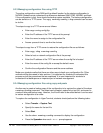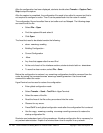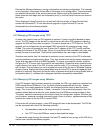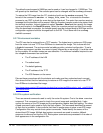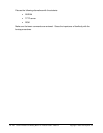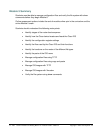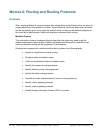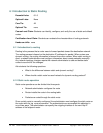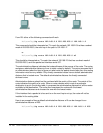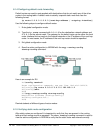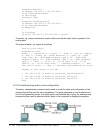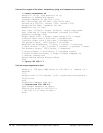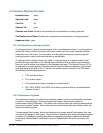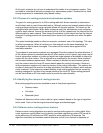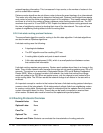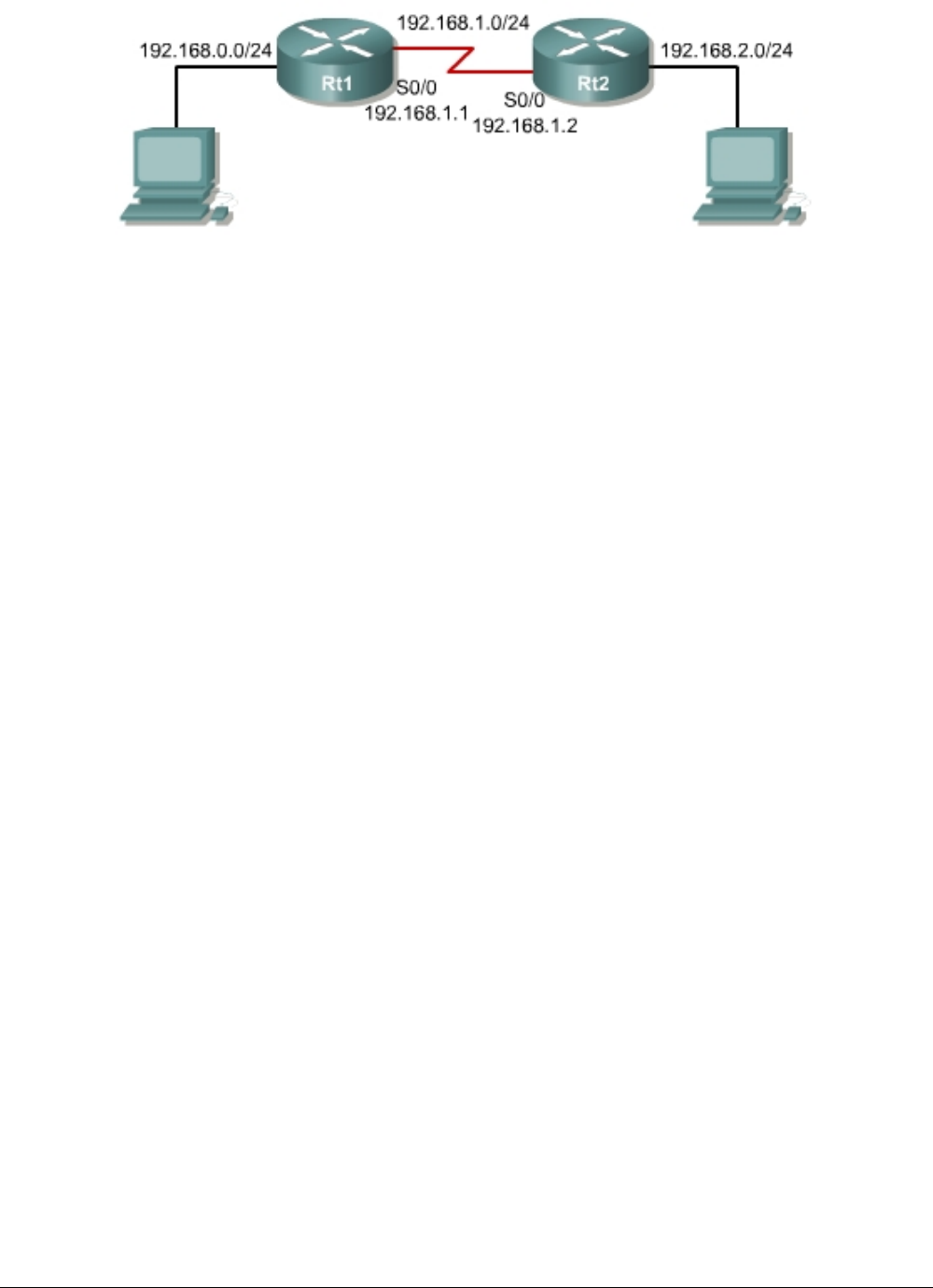
64 - 238 CCNA 2: Routers and Routing Basics v3.1 Instructor Guide – Module 6 Copyright © 2004, Cisco Systems, Inc.
From Rt1 either of the following commands will work.
Rt1(config)#ip route 192.168.2.0 255.255.255.0 192.168.1.2
This command should be interpreted as “To reach the network 192.168.2.0 that has a subnet
mask of 255.255.255.0, the next hop in the path is 192.168.1.2”.
or
Rt1(config)#ip route 192.168.2.0 255.255.255.0 s0
This should be interpreted as “To reach the network 192.168.2.0 that has a subnet mask of
255.255.255.0, send the packet out interface serial 0/0”.
The administrative distance indicates the trustworthiness of the source of the route. The router
assigns an administrative distance of one to static routes by default. The router assumes that if
an administrator takes the time to figure out what route the packet should take then this routing
information must be very reliable. Only directly-connected routes have a default administrative
distance that is trusted more. The default administrative distance for directly-connected
devices is zero.
Administrative distance should not be confused with the metric of the route. The metric of the
route indicates the quality of a route. When a router decides which route to a particular
destination to put in the routing table, it compares the administrative distances of all the routes
available to that destination. The router then examines the routes with the lowest
administrative distances and chooses the one with the lowest metric.
If the interface that a packet is to be sent to on the next hop is not up, the route will not be
installed in the routing table.
Here is an example of how a default administrative distance of 0 can be changed to an
administrative distance of 255:
Rt1(config)#ip route 192.168.2.0 255.255.255.0 192.168.1.2 255



